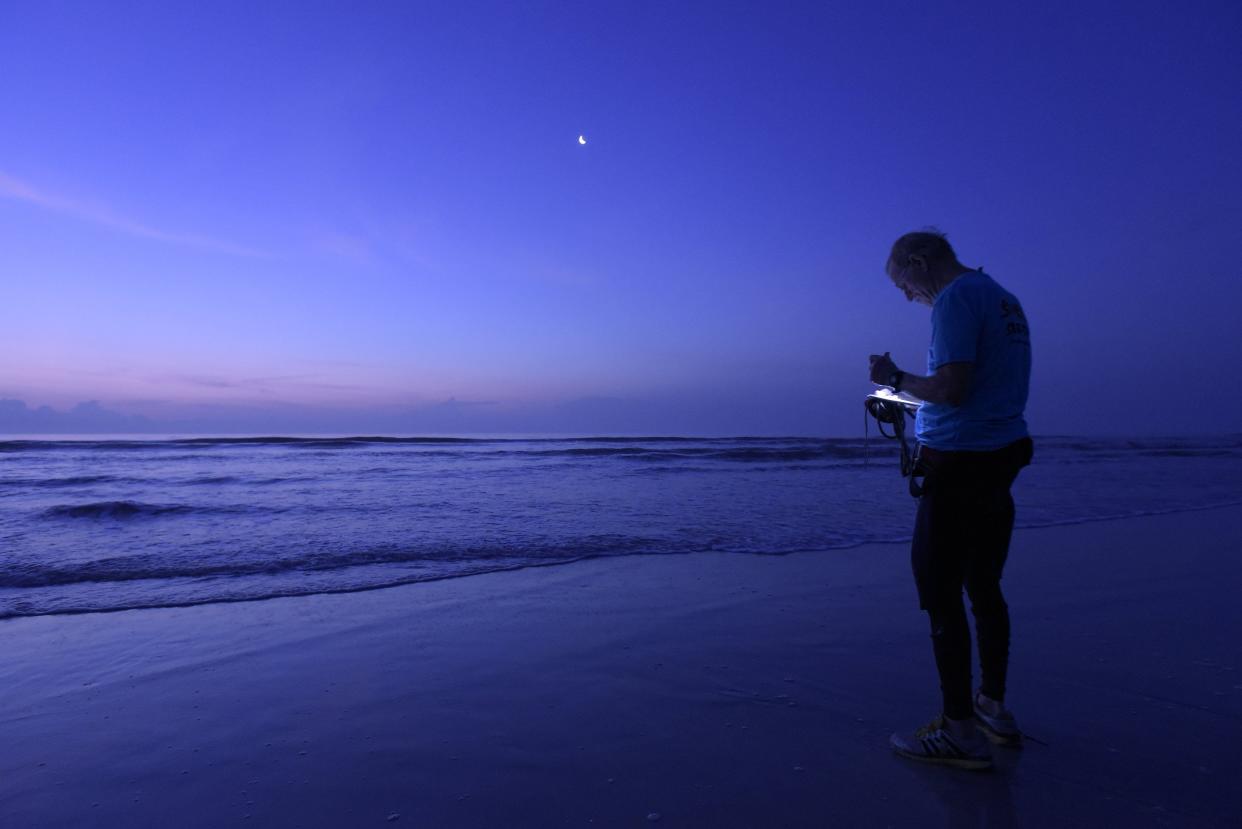Hot, then cold in Northeast Florida, how does the fickle weather impact marine life

Blink, blink, is it really February already? And true to form for Northeast Florida, the weather cannot decide to be hot or cold. But days are getting longer, so we know consistent warmer weather is ahead.
Regardless of the weather, scientists try to continue their river sampling year-round so that we can get an accurate picture of what is happening in the environment.
Perhaps one of the greatest advantages we have gained in recent years is in the instrumentation we use to gather some data. It was not all that long ago that to get even temperature readings, we had to physically go to the location to insert a thermometer in the water. Things like dissolved oxygen, salinity or nutrients required taking water samples back to the lab for analysis.
Warm or cold weather ahead: The Groundhog Day 2023 results are in — Here's what you need to get through six more weeks of winter
La Nina, El Nino and ENSO: Weather events afar impact Florida; get ready for a dry summer
Things have come a long way. Now we have sophisticated probes that can measure not only temperature but also a vast array that includes salinity, dissolved oxygen, pH, chlorophyll and some nutrients. In some cases we don’t even have to have physical instruments on site but can use satellite-mounted optical scanners for the same information.
In other cases we mount an array of instruments with the ability to collect the data and transmit it back to the lab. That has given us the ability to collect huge data sets of a variety of environmental parameters.
Years ago I was happy to have seasonal data taken quarterly to report on what was happening. Now we can have an almost continuous flow of data taken at a frequency of minutes to see an incredibly detailed picture of what is happening.
What is truly mind-boggling to me is that it is on my phone in almost real-time. Has anyone looked at radar on their phone to see if it was raining recently?
However, some things still have to be done much like they have for many years. And while we do have the ability to obtain data remotely from sensors placed in the river, often we have to rely on good, old-fashioned field work to get the information we need.
Nothing has replaced collecting samples to identify various species. We must seine, or use nets, to determine what is present and when.
River Life: Things do change, but our ability to conceptualize large numbers is limited
River Life: Natural and human factors contribute to climate change
When we want to look at what is in the bottom, we often use a dredge or Ponar Sampler to collect a predetermined amount of sediment. A Ponar Sampler is a smaller version of a clam shell dredge that is dropped into the mud, and then it closes as it is lifted out to take the volume needed. We then sort it through a series of sieves with smaller and smaller mesh screens to separate it by size. To identify the living material, we use a chemical stain, such as Rose Bengal, that conveniently colors once-living things a distinctive red. It makes finding them out much easier.
For the smaller organisms, the picking and sorting is done with the aid of a microscope or magnifying lens. Then comes the fun part of trying to identify them to the lowest possible taxonomic level using dichotomous keys. Those keys allow you to decide between a series of choices of characteristics as to its genus species identity. Tedious but fun for many scientists.
I have spent many hours of my life, happily picking and sorting various bits of red-stained things from the mud, sometimes recognizing it from a previous sample or having to study the keys to identify the species. Scientists experience great satisfaction when they identify one that they had not seen before. Sort of like a birder adding to their life list of birds they have seen.

Glad you asked River Life
Does the cold, then warm and then cold days we have in Northeast Florida during the winter affect the marine life?
The short answer is not much. Water takes a lot of energy to change temperature, so daily fluctuations have minimal effect. We see this in weather patterns when it is cooler along the river or ocean during the summer and warmer in the winter. So despite the warm days, it is cooler and longer nights that keep the water cooler in the Northeast Florida version of winter. Daylight cycles make more of a difference to most animals. Days are getting longer and that tells the various species that warmer days are coming.
River Life runs the first Tuesday of each month in The Times-Union. Email Quinton White, executive director of Jacksonville University’s Marine Science Research Institute, with questions about our waterways at qwhite@ju.edu. For more on the MSRI, visit ju.edu/msri.
This article originally appeared on Florida Times-Union: Regardless of Florida's weather, river sampling tells the story

